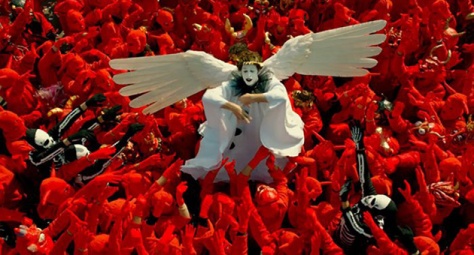By Dennis Hartley
(Originally posted on Digby’s Hullabaloo on June 3, 2017)

This entry from Italian writer-director Alessandro Aronadio is a deadpan dramedy in the Jim Jarmusch vein. Filmed in stark B&W, it follows the travails of a sad sack protagonist who awakens in his girlfriend’s apartment to a ringing in his ears and a cryptic, scribbled note on the fridge. This kick-starts an increasingly bizarre and surreal day in the life. At times, it recalls Richard Linklater’s Waking Life, but unfortunately, it’s not as compelling. A few good chuckles here and there…but this film goes nowhere, fast.








